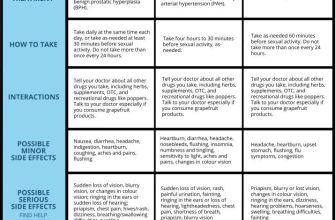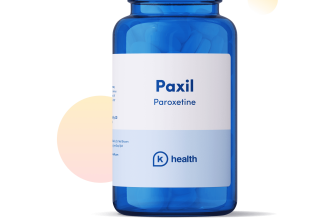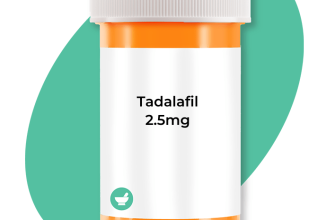Consider Diamox (acetazolamide) for altitude sickness prevention. This medication helps your body adjust to lower oxygen levels more easily. Start taking it 24 hours before ascent and continue for at least 2 days at altitude. Dosage depends on your weight and should be determined by your doctor. This is not a replacement for proper acclimatization.
A typical adult dosage begins at 125mg twice daily. Always follow your doctor’s prescription. Common side effects include tingling in the fingers and toes, increased urination, and mild nausea. These usually subside as your body adjusts. Severe side effects are rare but require immediate medical attention. Consult your physician if any concerns arise.
Diamox is most effective when combined with gradual ascent and proper hydration. Drink plenty of water throughout your trip, particularly at high altitudes. Avoid alcohol and caffeine, as they can dehydrate you. Pay close attention to your body’s signals: headaches, dizziness, and fatigue are early signs of altitude sickness. If symptoms worsen, descend immediately.
Remember: Diamox is a preventative measure, not a cure. It won’t magically eliminate altitude sickness risks. While effective for many, it doesn’t work for everyone. Always discuss the risks and benefits of Diamox with your physician before undertaking high-altitude activities.
- Diamox for Altitude Sickness: A Comprehensive Guide
- Understanding Diamox: Mechanism of Action and Dosage
- Preparing for High Altitude: When and How to Take Diamox
- Dosage and Timing
- Duration of Use
- Important Note:
- Managing Side Effects of Diamox: What to Expect and How to Cope
- Common Side Effects and Solutions
- Less Common, but Important, Side Effects
- Dealing with More Serious Side Effects
- Alternatives to Diamox and When to Seek Medical Help
Diamox for Altitude Sickness: A Comprehensive Guide
Consult your doctor before using Diamox, especially if you have kidney problems, sulfa allergies, or are pregnant/breastfeeding.
Diamox (acetazolamide) helps prevent altitude sickness by increasing your body’s ability to excrete acid, counteracting the effects of reduced oxygen. It’s usually prescribed as a preventative measure, beginning 24-48 hours before ascent.
- Dosage: Your doctor will determine the correct dosage, typically 125-250 mg twice daily.
- Duration: Continue taking it for 2-3 days after reaching your highest altitude.
- Side effects: Common side effects include tingling in extremities, increased urination, and mild nausea. These usually subside as your body adjusts. Inform your doctor immediately about more severe side effects like severe stomach upset, or unusual tiredness.
While Diamox significantly reduces the risk of altitude sickness, it doesn’t eliminate it entirely. Combine it with other preventive measures:
- Ascend slowly: Spend at least one day at each altitude increment of 1,000 meters (3,300 feet).
- Hydrate: Drink plenty of water throughout your ascent and stay hydrated at higher altitudes.
- Rest adequately: Avoid strenuous physical activity for the first 24 hours at higher altitudes.
- Monitor your symptoms: Pay attention to headache, nausea, vomiting, dizziness, and breathlessness.
If you experience altitude sickness symptoms despite using Diamox, descend immediately. Immediate descent is the most effective treatment.
This information is for guidance only and does not replace professional medical advice. Always consult a doctor or travel clinic before taking Diamox or traveling to high altitudes.
Understanding Diamox: Mechanism of Action and Dosage
Diamox, or acetazolamide, works by inhibiting carbonic anhydrase, an enzyme in your kidneys. This inhibition reduces bicarbonate reabsorption, increasing the excretion of both bicarbonate and acid from your body. The resulting decrease in blood pH and increased urine output helps alleviate symptoms of altitude sickness by promoting faster acclimatization.
Dosage depends on your individual needs and your doctor’s recommendations. A common starting dose is 125 mg twice daily, beginning one to two days *before* ascent, and continuing for the duration of your stay at high altitude. Some individuals may need a higher dose, up to 250 mg twice daily, while others may find a lower dose sufficient. Your doctor will tailor the dosage based on your symptoms, health, and altitude.
Remember to drink plenty of water while taking Diamox. Increased urination is a common side effect, and proper hydration mitigates this. Common side effects also include tingling in the extremities, nausea, and appetite changes. These are generally mild and temporary. Consult your doctor immediately if you experience any severe side effects.
Always consult your physician before starting Diamox, particularly if you have pre-existing medical conditions, such as kidney stones, liver disease, or sulfa allergies. Diamox isn’t a substitute for proper altitude acclimatization; it’s a supportive medication to help manage symptoms.
Preparing for High Altitude: When and How to Take Diamox
Begin Diamox 1-2 days before ascending to high altitude. This allows your body to adjust gradually. For most, a 125mg dose twice daily is sufficient, but your doctor may recommend a different dosage depending on your individual needs and the altitude you’re reaching.
Dosage and Timing
Take Diamox with food to minimize stomach upset. Consistent timing is key; maintain a regular schedule throughout your ascent and stay hydrated by drinking plenty of water. If you experience side effects like tingling in your fingers and toes, reduce the dosage or discontinue use, and consult your doctor immediately. Do not stop abruptly; reduce gradually under medical supervision.
Duration of Use
Continue taking Diamox for 2-3 days after reaching your highest altitude. Then gradually reduce the dosage over several days before stopping completely. This tapered approach minimizes the risk of rebound symptoms. If you experience symptoms like headaches or nausea, talk to your doctor.
Important Note:
Diamox isn’t a substitute for acclimatization. It helps mitigate altitude sickness symptoms, but slow ascent and adequate rest remain vital. Consult your physician before taking Diamox, particularly if you have pre-existing health conditions like kidney problems or sulfa allergies.
Managing Side Effects of Diamox: What to Expect and How to Cope
Begin by taking Diamox with food to minimize stomach upset. This simple step often prevents nausea and vomiting. Drink plenty of water throughout the day; dehydration exacerbates side effects.
Common Side Effects and Solutions
Tingling in your extremities (paresthesia) is frequent. This usually subsides as your body adjusts. If it’s bothersome, your doctor might adjust your dosage. Frequent urination is another common effect; plan accordingly, especially during hikes or activities far from restrooms.
Some individuals experience mild dizziness or drowsiness. Avoid driving or operating machinery until you know how Diamox affects you. Rest when needed; don’t push yourself too hard, especially at altitude.
Less Common, but Important, Side Effects
Dealing with More Serious Side Effects
Rarely, Diamox can cause more serious side effects like severe allergic reactions (rash, swelling, difficulty breathing), kidney stones, or metabolic acidosis. Seek immediate medical attention if you experience any of these. Report any unusual symptoms to your doctor promptly.
Remember to discuss any pre-existing medical conditions with your doctor before starting Diamox. They can help you assess risks and benefits appropriately. A proactive approach ensures the safest and most effective use of this medication at altitude.
Alternatives to Diamox and When to Seek Medical Help
Consider acetazolamide alternatives like ibuprofen for headache relief and dexamethasone for severe altitude sickness. Proper hydration is crucial; drink plenty of water before, during, and after ascent. Gradual ascent minimizes risk significantly. Acclimatization, spending extra time at lower altitudes before climbing higher, is your best defense.
For mild symptoms like headache, nausea, or fatigue, rest and hydration usually suffice. Over-the-counter pain relievers can help manage headaches. However, severe symptoms demand immediate medical attention.
Seek medical help if you experience: severe headache, shortness of breath at rest, chest pain, coughing up blood, confusion, ataxia (loss of coordination), or significant swelling.
High-altitude pulmonary edema (HAPE) and high-altitude cerebral edema (HACE) are life-threatening conditions requiring immediate descent and medical treatment; delay can be fatal. Don’t hesitate to contact emergency services or descend immediately if you suspect either.
Pre-existing conditions, such as heart or lung disease, increase altitude sickness risk. Discuss your health history with your doctor before any high-altitude activities. They can provide personalized advice and assess your risk.










